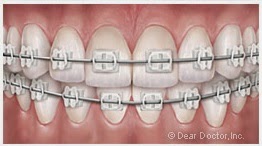 |
| Photo provided by Myteethforever.com |
It has been reported that the
first noticed people notice are smiles. Think about it, when you’re
having a conversation with some it is kind of hard to ignore looking at their
mouths. With this little known fact, you want to make sure you’re putting your
best smile forward.
Great
and habits and healthy eating are key and have 5 tips to you produce that "selfie" perfect smile.
1. Visit your Orthodontist and Dentist: Making sure you schedule regular visits is the number one way to make sure you are on top of your oral health. Your Orthodontist and Dentist can give you all the information to stay on top of your health. Also if you currently have any oral health issues they can provide the right treatment.
2. Floss twice a day: Brushing your teeth isn’t enough. Flossing removes plaque and excess food particles that may be stuck between your teeth. Flossing can actually make teeth appear brighter if done regularly.
3. Eliminate soda from your diet: Soft drinks are one of the most common sources of tooth decay. Acid and sugar in soft drinks soften tooth enamel which contributes to cavities and can even lead to tooth loss.
4. Add calcium to your diet: The calcium in dairy products helps put back minerals your teeth may have lost due to other foods. Calcium rich foods are foods such as includes milk, cheese and yogurt.
5. Rinse with water: After snacks and meals try to remember to rinse out your mouth with water. Water contains fluoride can protect and remineralize teeth after demineralization caused by acid produced by foods like sugars.
Not only is keeping a great smile good for visual purposes, it also affects your health as well. Kids aren’t the only ones at risk for cavities. At all you must make your oral health a top priority.







